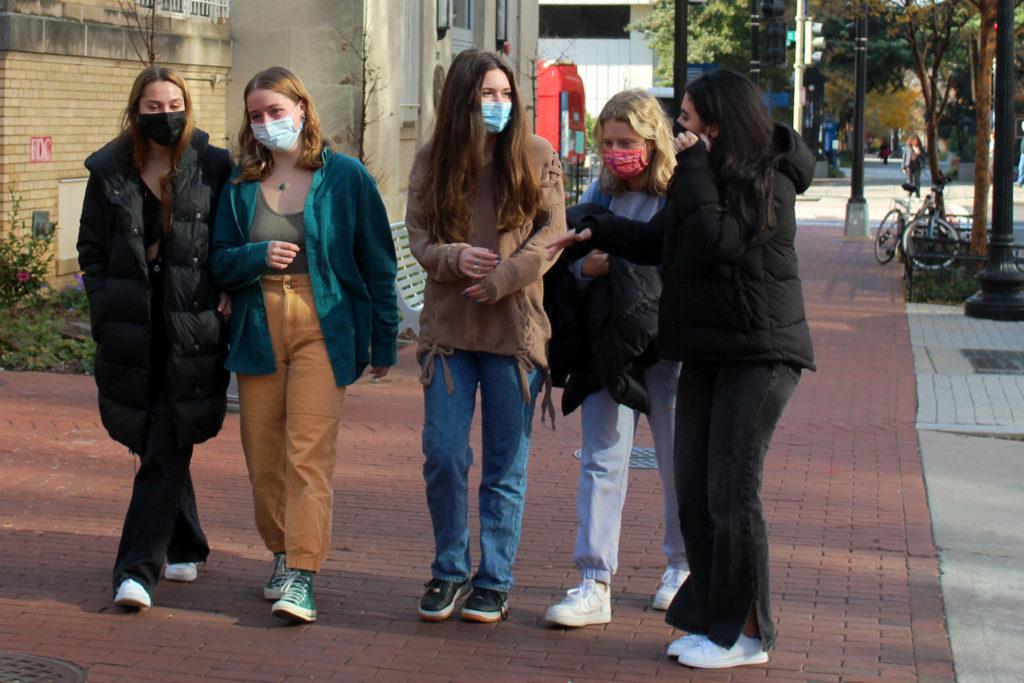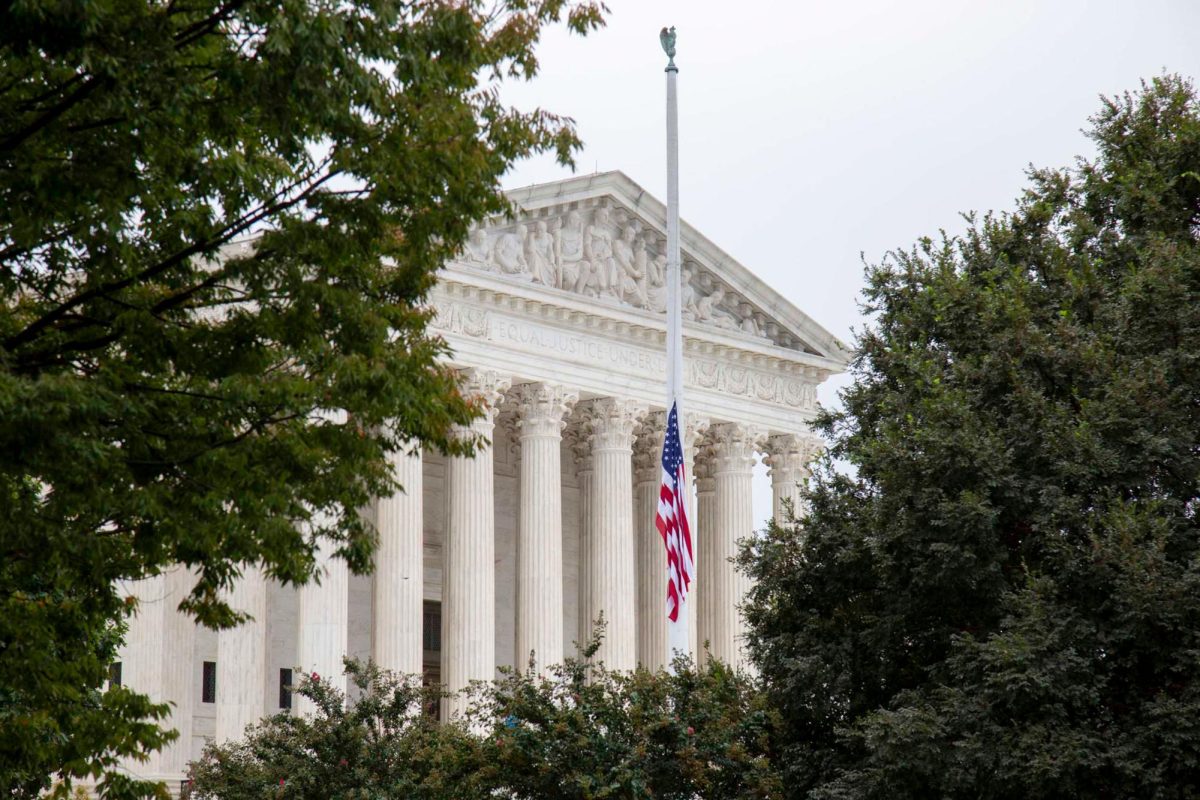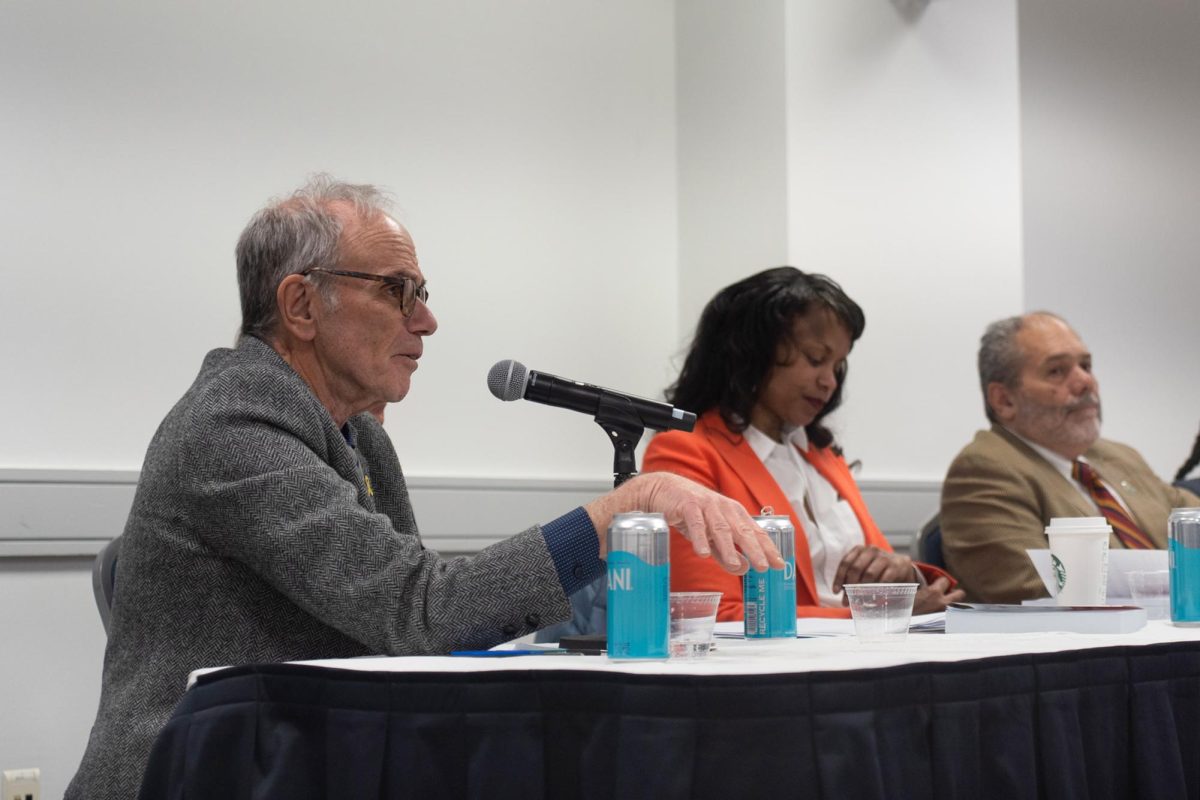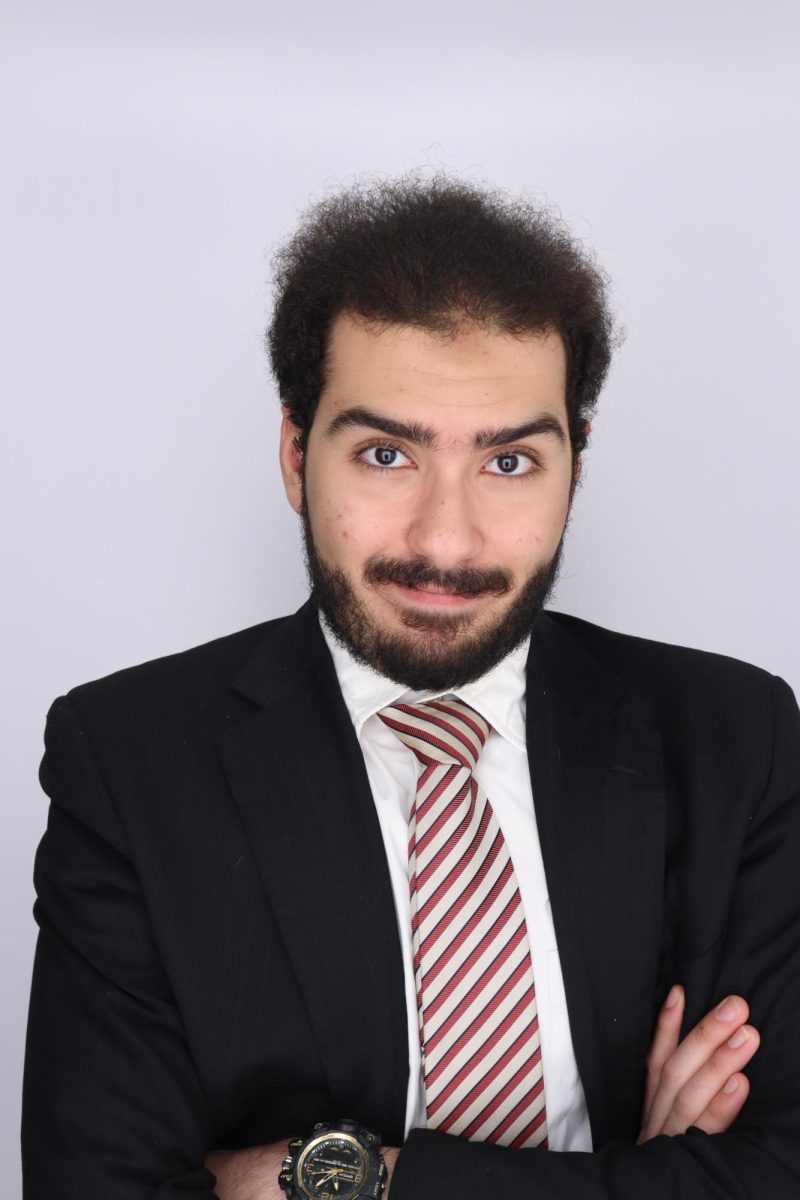The University remains one of the few universities in the country to maintain a mask mandate in instructional settings, a continuation of an early pandemic policy that experts say still protects public health on campus.
GW is the only institution to still require masks in classrooms in the United States among all “large” and “urban” universities, characteristics based on metrics set by Forbes’ America’s Top Colleges list ranking the top 498 higher education institutions in the country. A Hatchet analysis of mask policies across the 229 universities that Forbes classifies as “large” and “urban” shows that GW stands alone among fellow institutions of similar size and setting despite a national shift away from aggressive masking policies three years after COVID’s initial outbreak.
Experts in public health and biology said they expect GW to drop the mandate as transmission rates slow, but GW’s lasting mandate has exhibited “leadership” in COVID policy because the requirement has continued to protect community members who are vulnerable to more severe symptoms from viruses.
Within D.C., GW and Gallaudet University are the only higher education institutions with mask mandates still in place. The University of the District of Columbia and Georgetown, American, Catholic and Howard universities each dropped their mandates last year.
The United States contains a total of 5,900 higher education institutions across the country, according to the National Center for Education Statistics.
Despite universities not requiring masks, several like Yale, Harvard, Stanford and Brown universities strongly recommend masking and allow professors to require masks in their classrooms.
Interim University President Mark Wrighton said at a Faculty Senate meeting last month that masks are still required in classroom settings to limit the transmission of COVID-19 during the spring semester. DC Health has categorized the District’s COVID community level spread as low since late July, and the department hasn’t classified transmission levels as high since late January 2022, according to data from the District’s website.
“We are going to remind everyone that we still have the need to be mindful of infectious diseases as that in the classrooms,” Wrighton said at the meeting. “We’re going to require that there be masked students, so thank you all for your cooperation on that matter.”
GW dropped its indoor mask mandate for all University spaces in September, keeping the requirement in place in classrooms, health care facilities and on GW-operated transportation. Students said they experienced “mask fatigue” last semester as the number of students wearing masks in classrooms and on the Mount Vernon Express declined.
Immunocompromised students raised concerns last year after officials lifted the biweekly COVID testing requirement in June, saying lax COVID policies put them at disproportionate risk for severe COVID symptoms.
Experts said although GW could drop the mask mandate at any time, its masking policy demonstrates a “cautious” approach to the pandemic. Some said continuing the policy is a “fantastic” decision given the number of circulating viruses, both COVID and non-COVID.
Emanuel Goldman, a professor of microbiology at Rutgers University, said GW’s mask mandate represents a more cautious approach toward limiting COVID transmission, but GW’s administration could decide mask wearing is “excessive.” He said officials could instead “redirect” their focus to instituting an updated vaccine requirement with the new bivalent booster, which the Food and Drug Administration authorized in August.
GW does not require students or faculty to receive the bivalent booster, but two of GW’s peer schools, Tufts and Wake Forest universities, require students, faculty and staff to receive the shot. GW officials require students, faculty and staff to be vaccinated against COVID with the first booster shot the FDA approved, strongly recommending the bivalent booster.
“I can only assume that GW administration wishes to maintain the most cautious approach to managing the pandemic, while other schools presumably are satisfied that vaccination requirements provide sufficient protection,” Goldman said in an email.
Laura Corlin, an assistant professor of public health and community medicine at Tufts University, said Tufts no longer requires masks, but most of her students still opt to wear them in her classes. She said having a mask mandate in effect is wise because it protects students who are more vulnerable to viruses.
“It shows some leadership that they’re willing to be protective of the community’s health,” Corlin said in an interview.
John Swartzberg – a clinical professor emeritus at the University of California, Berkeley’s School of Public Health’s infectious diseases division – said masks are “strongly recommended” on the UC Berkeley campus, but outside of its School of Public Health, most students don’t wear masks. He said UC Berkeley dropped its mask mandate at the same time as the City of Berkeley’s health department last February with 98 percent of students vaccinated on campus under the university’s vaccine requirement.
He said in an email that masks prevent some transmission of the virus, which he “assumes” is a priority for GW, while most other universities have opted to give students and faculty the choice to mask. Swartzberg said he “suspects” GW could drop the mask mandate if the pandemic continues to become less severe.
He said the new XBB.1.5 subvariant is especially serious for immunocompromised people who have not received a vaccine and can evade drugs that help individuals build antibodies that can help fight off the coronavirus.
“If you’re up to date with your vaccination, the chances of being hospitalized and dying are very, very small, even with XBB.1.5, so it’s not like the vaccines aren’t working,” Swartzberg said. “They just are not as potent against this as they were against some of the other variants.”
Two GW instructors said students in their classes are adhering to the mask policy and are willing to cooperate when asked to put on a mask as the University’s mandate continues to remain in place.
Mika Natif, a professor of art history specializing in Islamic art, said students in her art history classes adhere to the mandate, and some of her students have tested positive for COVID during the first three weeks of the semester. She said she hopes GW decides to drop the mask mandate only if data shows that such a move would not risk community members’ health.
She added that a reinstated mandatory monthly COVID testing policy at GW would give the community a better picture of COVID transmission around campus.
Natif said she will comply with GW’s decision if they decide to drop the mandate, but professors who currently teach without a mask are “irresponsible.”
“I told them if they pass the classroom threshold, they need to have their mask on and that’s what they’re doing,” Natif said of students in her classes.
Matthew DeMaio, a graduate student teaching Foundations of Anthropological Thought, said students who didn’t wear masks have not been a problem this school year.
“When someone wasn’t masking, it was always just a case of someone absentmindedly forgetting, and they were perfectly happy to put one on when prompted,” DeMaio said in an email.
Nick Pasion and Eóighan Noonan contributed reporting.








